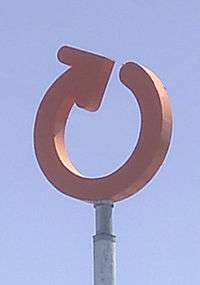Biotren
 | |||
 | |||
| Overview | |||
|---|---|---|---|
| Locale | Greater Concepción | ||
| Transit type | Commuter rail | ||
| Number of lines | 2 | ||
| Number of stations | 17 (24 in 2015) | ||
| Daily ridership | 6500 daily | ||
| Website | http://www.biotren.cl | ||
| Operation | |||
| Began operation | 1 December 1999 | ||
| Operator(s) | Fesub Concepción SA | ||
| Technical | |||
| System length | 48 km | ||
| |||


The Biotren is an at-grade urban commuter rail system that covers a big part of the city of Concepción, capital of the region of Bío-Bío, also known as Greater Concepción or Concepción Metropolitan Area, both synonyms of "city" according to the urbanistic standards and laws of Chile, of which this city is the second biggest, most populous and important of the country. Biotren connects the boroughs or comunas of Concepción Centro (downtown borough), Talcahuano, Hualpén, San Pedro de la Paz, Chiguayante and Hualqui. The system is managed by Ferrocarriles Suburbanos de Concepción S.A. (Fesub), which name comes from the former metrorail system of the city and is a subsidiary of Empresa de los Ferrocarriles del Estado (EFE), Chilean State Railways. Biotren is part of the Plan and Authority of Integrated Transit of Concepción, Biovías.
The system was partially inaugurated on 24 November 2005 in a ceremony that counted with the presence of the then President of Chile, Ricardo Lagos.
History
It began to fully operate in 2006 because during the year 2005 the railroad lines were being enhanced for the new system. The AEL and AES trains that the former system used were replaced by UT-440 MC(Modelo Concepcion) units that were specially enhanced for the city of Valencia, Spain by Renfe.
Architecture
Biotren stations or Bio Stations have a totally renewed architecture compared to the former system. The platforms have roofs and access for the handicapped. The fare is paid at the entrance and exit of the stations using a prepayment card called Biovías, with a deferred payment system according to the distance travelled. The card's recharge can be made in any station.
Rolling stock
The Empresa de Los Ferrocarriles del Estado (EFE) invested a total of US $16.800.000 for the trains used in the system. The current fleet is composed by 8 trains UT-440 Modelo Concepción of 3 wagons each, bought from the Red Nacional de Ferrocarriles Españoles (Spain State Railways, RENFE). The trains are painted orange and have 321 seats (20 folding seats) and a capacity of 590 passengers.
Lines
- Line 1: It crosses all Concepción from North to South, from "Mercado" Terminus Station (Port of Talcahuano) to "Hualqui" Terminus Station (Hualqui).
Bio Stations:
- Mercado
- El Arenal
- Hospital Higueras
- Los Cóndores
- Universidad Técnica Federico Santa María
- Lorenzo Arenas
- Concepción
- Chiguayante
- Pedro Medina
- Manquimávida
- Leonera
- Hualqui
- Line 2: It crosses the Bío-Bío river on the enhanced Puente Ferroviario (Railroad Bridge) Bío-Bío, the longest of its kind in Chile. The line starts, from downtown to west side, in the "Concepción" Exchange (or Intermodal) Station (Civic District, Concepción Centro) and ends in the "Lomas Coloradas" Terminus Station (Lomas Coloradas, San Pedro De La Paz).
Bio Stations:
- Concepción
- Juan Pablo II
- Diagonal Bío-Bío
- Costa Mar
- Alborada
- Lomas Coloradas
- Conavicoop
- Escuadrón
- Los Canelos
- Los Molles
- Los Chiflones
- Nova Rosa Medel
- Coronel

The stations in black are Exchange (or Intermodal) Bio Stations.
Exchange System
The Exchange or Intermodal Bio Stations have personal bicycles parking lockers for those who arrive by cyclepaths (except for El Arenal) to take the Biotren and synchronization with combination buses called Biobuses.
See also
External links
| Wikimedia Commons has media related to Biotren. |
- Plan and Authority of Integrated Transit of Concepción, Biovías.
- Subsidiaries of EFE General information about Ferrocarriles Suburbanos de Concepción S.A.
| ||||||
